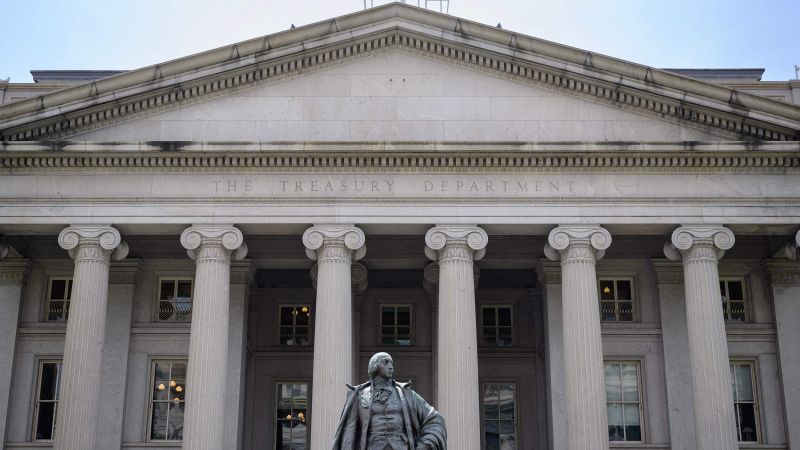The United States risks a bond market crisis of the kind that engulfed the United Kingdom 18 months ago, sending yields soaring and sparking a run on the pound, according to Congress’s independent fiscal watchdog.
The stark warning from the Congressional Budget Office comes as US government debt continues to break records, fuelling concerns about the burden that places on the economy and taking a toll on America’s credit rating.
In an interview with the Financial Times, CBO director Phillip Swagel said US government debt — which the Treasury Department puts at nearly $35 trillion — is on an “unprecedented” trajectory.
“The danger, of course, is what the UK faced with former Prime Minister (Liz) Truss, where policymakers tried to take an action, and then there’s a market reaction to that action,” he told the newspaper, referring to the investor backlash against plans for unfunded tax cuts that forced Truss to resign after just 45 days in office.
The US was “not there yet,” Swagel said. But as higher interest rates raise the cost of paying its creditors, on track to reach $1 trillion per year in 2026, bond markets could “snap back,” Swagel added. CNN has contacted the CBO for comment.
Britain’s bond market rout in September 2022 offered a cautionary tale of what can go wrong when investors reject a government’s plan to borrow more.
UK government bonds, or gilts, and the pound sold off sharply, partly in response to plans by Truss to issue more debt in order to pay for tax cuts. Mortgage rates and other borrowing costs soared as investors demanded much higher premiums for owning UK debt.
The Bank of England was ultimately forced to intervene, pledging to buy gilts on “whatever scale is necessary.”
“Were dysfunction in this market to continue or worsen, there would be a material risk to UK financial stability,” Dave Ramsden, a senior official at the central bank, said at the time. “This would lead to … a reduction of the flow of credit to the real economy.”
US government debt has soared under both Republicans and Democrats in recent years, swelled by former President Donald Trump’s tax cuts in 2017 and pandemic stimulus under President Joe Biden.
Economists have been warning for years that the debt pile is reaching dangerously high levels and in August Fitch stripped the United States of its immaculate triple-A credit rating, citing “a high and growing general government debt burden.”
There could be more borrowing to come if Trump is re-elected president in November. He has promised to extend his 2017 tax cuts and has also spoken about reducing the corporate tax rate from the current 21% to 15%.
“I will make the Trump tax cuts the largest tax cut in history,” he said last month at the Black Conservative Federation’s Honors Gala in South Carolina.
In the UK, tax reductions planned by Truss amounted to the biggest cuts in 50 years and included slashing the top rate of income tax to 40% from 45%.
Even in the absence of Truss-style dysfunction in the US Treasury market, the increased cost of servicing debt after a recent rapid run-up in official interest rates is siphoning ever greater amounts of money away from US public services.
Interest costs on a common measure soared to $659 billion in fiscal year 2023, which ended on September 30, according to the Treasury Department. That’s up 39% from the previous year and nearly double what it was in fiscal year 2020.
In fiscal year 2023, the government spent more to service its debt than it did on each of housing, transport and higher education, according to the Committee for a Responsible Federal Budget, a non-profit.
According to the CBO, US government debt is set to keep rising. “Such large and growing debt would slow economic growth, push up interest payments to foreign holders of US debt, and pose significant risks to the fiscal and economic outlook,” it said in a report last week. “It could also cause lawmakers to feel more constrained in their policy choices.”
Read the full article here




